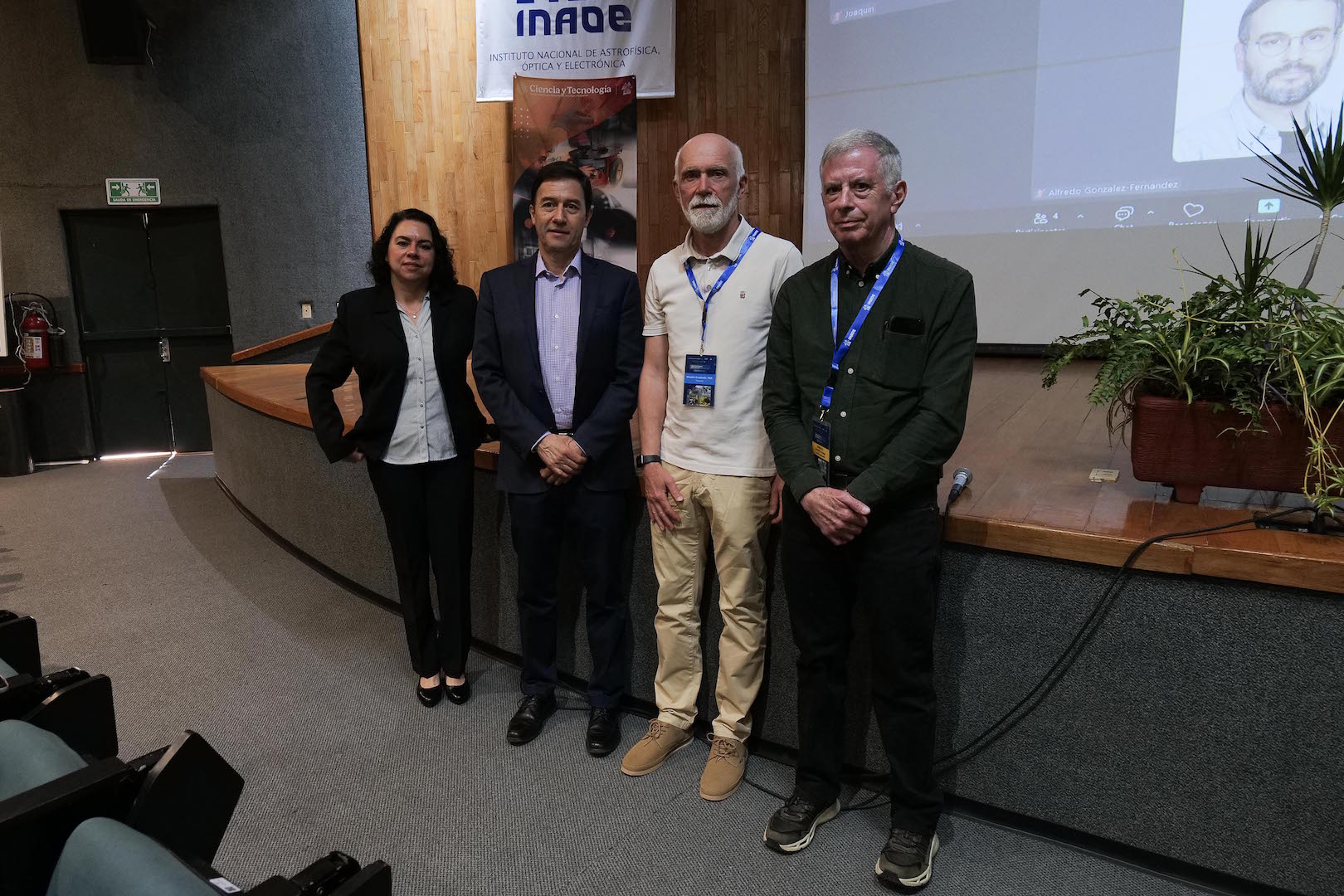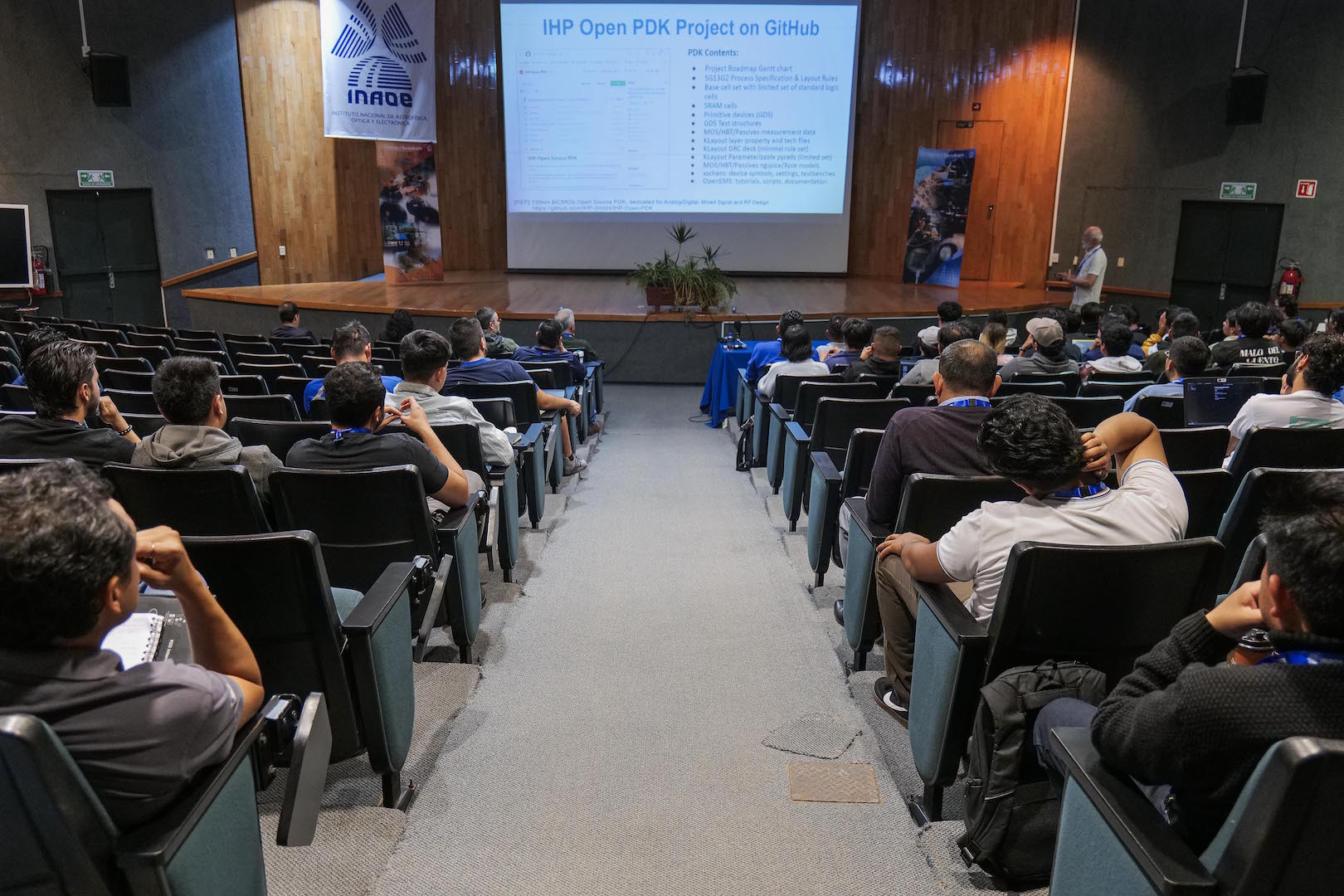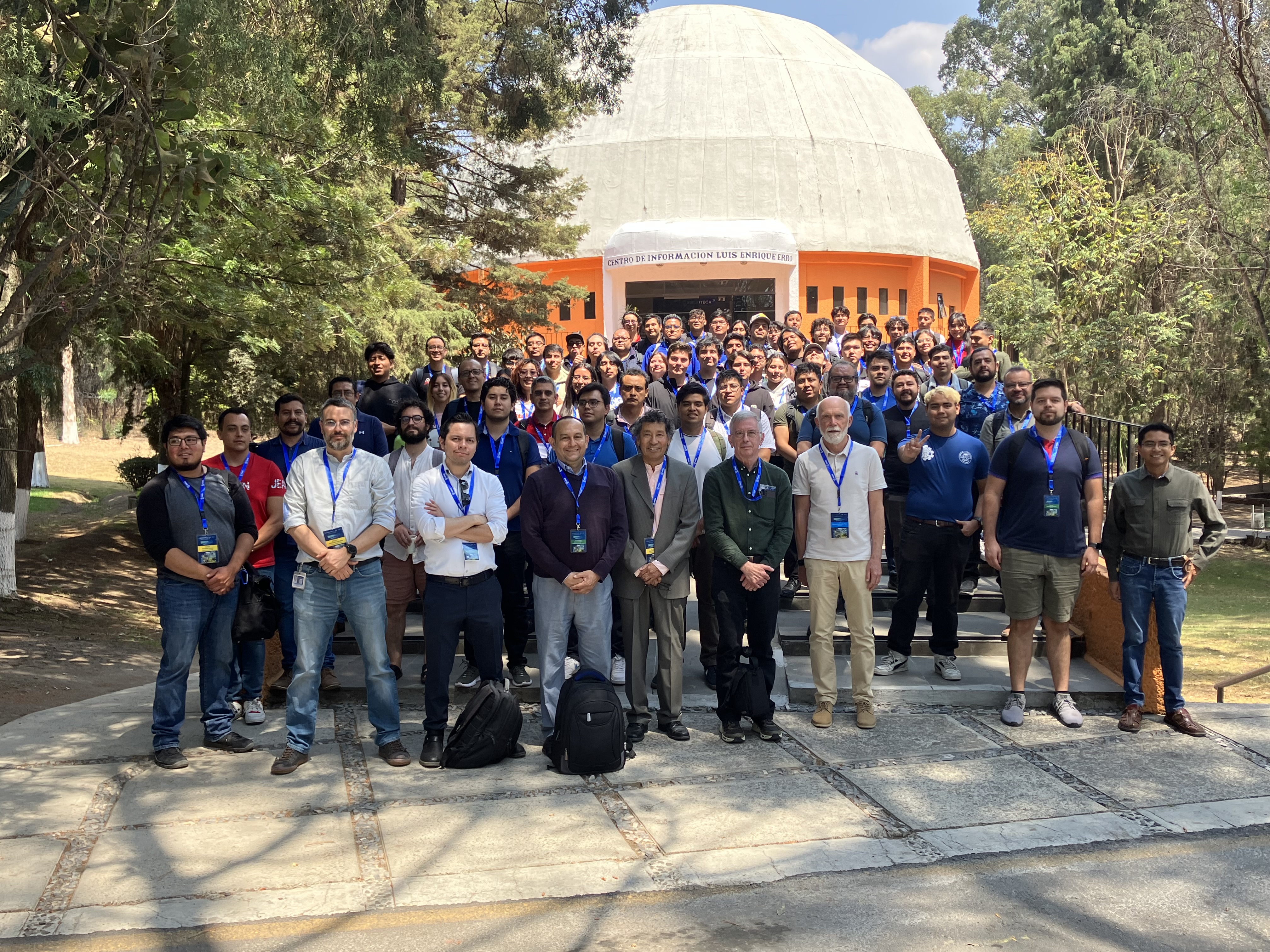Semiconductor Technologies Workshop
With over one hundred participants, including undergraduate, graduate, and academic students, the Semiconductor Technologies Workshop began yesterday at the National Institute of Astrophysics, Optics, and Electronics (INAOE), a public research center of the Secretariat of Science, Humanities, Technology, and Innovation (SECIHTI).

The activities began yesterday, May 14th, with an opening ceremony attended by Dr. Julián David Sánchez de la Llave, Director General of INAOE; Dr. Claudia Feregrino Uribe, in charge of affairs for the Research and Technological Development Directorates; and Dr. Roberto Murphy Arteaga, organizer of the workshop.

Also present was Dr. Wladek Grabinski of MOS-AK, who gave the opening keynote address on the "European OpenPDK Initiative."
The program of activities also includes lectures and workshops led by Dr. Joaquín Faneca Ruedas of CNM; Dr. Mehdi Saligane of Brown University; Dr. Arturo Sarmiento of INAOE; Dr. Colin Shaw of Silvaco; Dr. Noé Reyes Ortiz of Engineering; Dr. Carlos Díaz of TSMC; Dr. Peter R. Kinget of Columbia University; and Dr. Reydezel Torres of INAOE.
The objective of the Semiconductor Technologies Workshop is to introduce open-source tools for integrated circuit design, simulation, and testing.
The workshop's topic is relevant given that there are numerous commercial programs for integrated circuit design, simulation, and testing, but they are extremely expensive, even for educational levels. The workshop showcases open-source programs that anyone can use to design integrated circuits and develop simulations.
The Semiconductor Technologies Workshop is part of a collaboration with the Arbeitskreis Modellierung von Systemen und Parameter Extraktion (MOS-AK), a Swiss-based organization with over 25 years of experience in integrated circuit modeling, and the IEEE Electron Devices Society (EDS).
More information at https://www-elec.inaoep.mx/~taller_semiconductores

Luis Enrique Erro # 1, Tonantzintla, Puebla, México, Código Postal 72840, Tel: (222) 266.31.00, difusion@inaoep.mx
This work is licensed under a Creative Commons Attribution-NonCommercial-NoDerivs 2.5 Mexico License.


